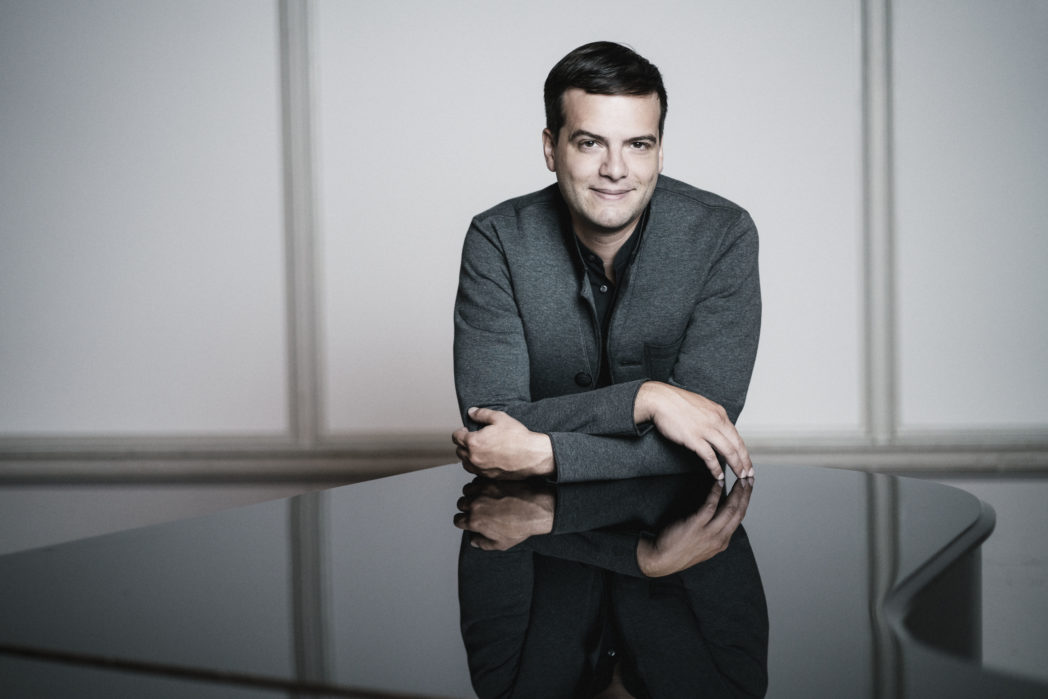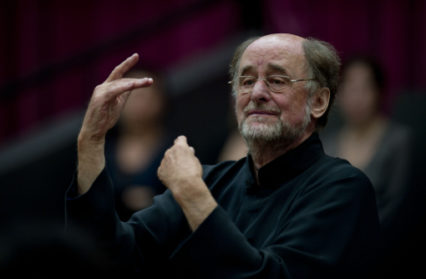Edward Christian-Hare attends a performance of Beethoven including ‘The Creatures of Prometheus’ Overture, conducted by Sir Roger Norrington and featuring soloist Francesco Piemontesi.
When we think of Beethoven, we tend to think of raw emotional expression. After all, arguably his most important contribution to music was driving the shift from aristocratic entertainment to personal artistic statement. Whilst this is the context within which any performance of Beethoven should be considered, it is particularly relevant when considering the Symphony No. 3, ‘Eroica’.
Sir Roger Norrington certainly achieved this emotional power. His method? Stark dynamic contrasts accomplished with very slight movements and highly suggestive facial expressions. In fact, it could even be said that he did most of the conducting with his face. The hand signals he did make were not grandiose but short and sharp, carrying no less authority. Indeed, his authority could be seen in the immediate and precise response of the orchestra to his smallest gesture. In several passages, he lay down his hands altogether and instead turned to each orchestral family when he needed to.
An excellent control of tempi and dynamics was clear right from the start. A conductor famed for his ‘revelatory Beethoven’, Norrington rose to prominence in the 1960s & 70s. He has long been at the forefront of the movement for historically informed musical performance, having become known in part for strictly adhering to Beethoven’s original metronome markings (a contentious issue!). Here the chosen tempi were admirable, and the orchestra rattled through the opening Prometheus Overture at tremendous speed.

For the Piano Concerto No. 3, Norrington opted to face soloist Francesco Piemontesi and the audience from a point between the pianist and the violas. Rehearsing like this had obviously had its benefits: there was an extraordinary level of communication between conductor, soloist and orchestra.
Piemontesi was constantly glancing and nodding at various musicians while maintaining regular eye contact with Norrington. This allowed them to share a sharp command of tempi and dynamics, each artist’s voice to become one and the same. This made for a spectacularly vigorous ‘Rondo’, which jolted the audience awake after the supposedly dreamy ‘Largo’ which, however, was rushed through. A more tranquil, emotional effect would have been achieved with a slower tempo.
Nonetheless, the obvious interplay between Norrington and Piemontesi made the concerto look and feel effortless. Piemontesi managed to cut just the right balance between light and forceful playing, so that the audience could only just hear him in the quietest passages. In the louder sections his expressive power came through, shaking the hall.
Sir Roger should also be praised for his remarkable interaction with the audience, all-too rare in conductors. This was especially noticeable in the ‘Eroica’, during which he turned round to nearly face the audience several times (sometimes grinning). This inspired confidence in his interpretation of the symphony, and almost made it feel like you were conducting with him.
The mark of a unique conductor, though, is an ability to shed light on aspects of familiar repertoire that may not usually be heard. As the ‘Eroica’ progressed, Norrington seemed to do this more and more: towards the end of the first movement, where the strings have a rising and falling scalic pattern in unison, they were much easier to pick out against the sheer volume of the brass than in more conventional performances.
The second movement funeral march was treated with due temperance, and the brass were only piercing where they should have been. Following this movement, despite having paused and encouraged applause after the ‘Allegro’, Norrington rightly stayed facing his orchestra. And so, after a moment of dead silence, he was able to move straight into a suitably bright and uplifting ‘Scherzo’.
Norrington’s grasp of Beethoven’s emotional power was best displayed, however, in the triumphant ‘Finale’. Hammered out at a hair-raising tempo, the theme and variations impressed beyond all the preceding movements. Again, it was the control of dynamics that stood out. In this respect, Sir Roger Norrington demonstrated his long experience in conducting Beethoven’s symphonies. He proved that a sharp command of relative volume is the key to conveying Beethoven’s raw emotional power effectively.
SWR Symphony Orchestra Stuttgart
Francesco Piemontesi (piano)
Sir Roger Norrington (conductor)
Beethoven: ‘The Creatures of Prometheus’ Overture; Piano Concerto No. 3 in C minor; Symphony No. 3 ‘Eroica’ in Eb major
St. David’s Hall, Cardiff, 14 March 2018
Header photo of Sir Roger Norrington by Alberto Venzago
Edward Christian-Hare is a contributor to Wales Arts Review.
You might also like…
David Truslove visits Covent Garden’s Royal Opera House for Bryn Terfel’s larger than life performance of Falstaff.











